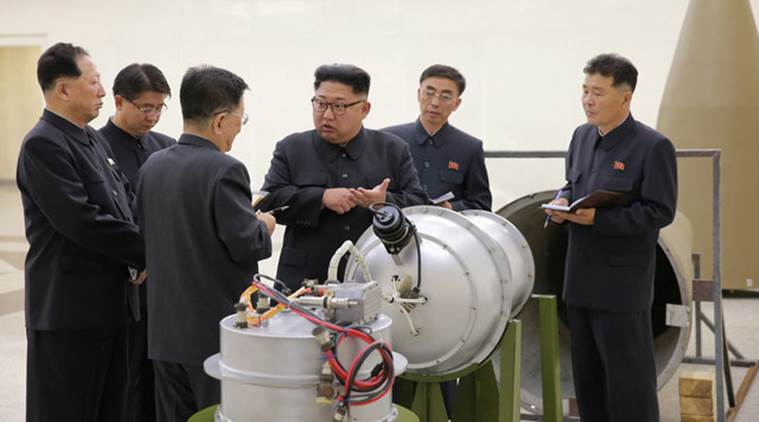Japan’s vulnerability
September 13, 2017 | Expert Insights

As North Korea has continued to ignore the growing calls to disable its nuclear program, Japan has become particularly vulnerable.
Background
Relations between Japan and North Korea are strained. There are no formal relations established between the two nations. Before Korea was divided into two nations, it was occupied by Japan in 1910. In the final days of World War II, Soviet Union declared war on Japan and advanced towards Korea. The US fearing that the Soviets would take over all of Korea, requested it to cease its military actions. Thus, Seoul and the southern part of Korea came to be occupied by US forces. By 1948, Korea had been divided into two factions. North Korea has harbored animosity towards Japan for the role it played in the invasion of the region before World War II.
The North Korean nuclear program has been a source of concern for the US and the international community for decades. In July 2017, North Korea successfully test launched two intercontinental ballistic missiles (ICBM). In August 2017, North Korea fired several short-range missiles into the sea. It has also conducted its sixth nuclear test; an event that triggered a 6.3 magnitude earthquake.
Analysis
The missile that flew over Japan was a Hwasong-12 rocket. The missile was fired from near the nation’s capital, Pyongyang and reportedly travelled a distance of more than 2,700km. It reached an altitude of about 550km. It flew over Erimomoisaki on the Northern Island of Hokkaido before falling into the Pacific Ocean. It broke into three pieces and fell into North Pacific Ocean – 1,180km from the Japanese coast.
Japanese Prime Minister Shinzo Abe called this development an “unprecedented” threat to the country. During a televised statement he noted, “North Korea launched a ballistic missile which appears to have flown over Japan. We will immediately collect and analyse details and the government will take full steps to protect Japanese people's lives." North Korea’s state media KCNA quoted Kim Jong Un has stating that this was “the first step of the military operation of the KPA [Korean People's Army] in the Pacific and a meaningful prelude to containing Guam.”
According to experts, North Korea was capable of conducting an attack via EMP (electromagnetic pulse) on the US mainland. William Graham, chairman of the U.S. congressional commission has written about the EMP attacks stating, “North Korea could make an EMP attack against the United States by launching a short-range missile off a freighter or submarine or by lofting a warhead to 30 kilometers burst height by balloon.” He added, “Even a balloon-lofted warhead detonated at 30 kilometers altitude could blackout the Eastern Grid that supports most of the population and generates 75 percent of U.S. electricity.”
United States has reportedly shielded important buildings and facilities from probable EMP attacks. However, such protections have not been initiated in Japan so far. Japanese Chief Cabinet Secretary Yoshihide Suga has recently stated that Japan was considering instating such measures. Retired Major Gen. Takashi Onizuka has often warned of EMP attacks. He has written, “If the electricity supply for a nuclear power plant is cut off, and the operator cannot deal with the situation by activating an emergency power system or generators, it could lead to an emergency like the Fukushima nuclear power plant accident.”
Assessment
Our assessment is that Japan’s vulnerability regarding North Korea should be urgently addressed by the Japanese government. An attack can prove to be calamitous for the world’s third largest economy and it should seek to avert it at all costs.
Read more:








Comments